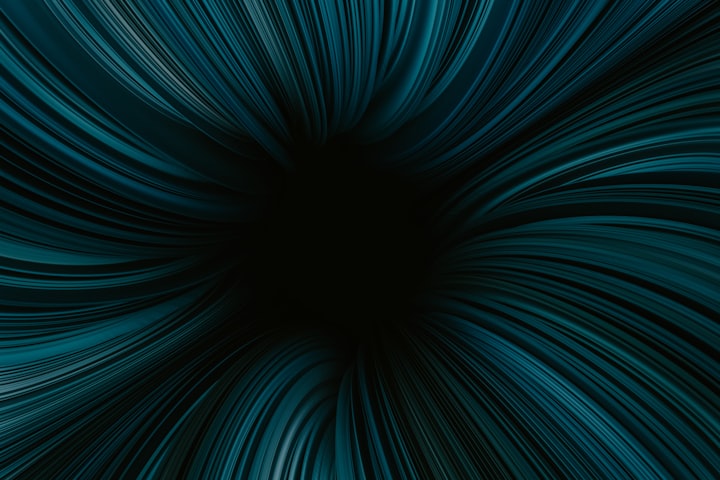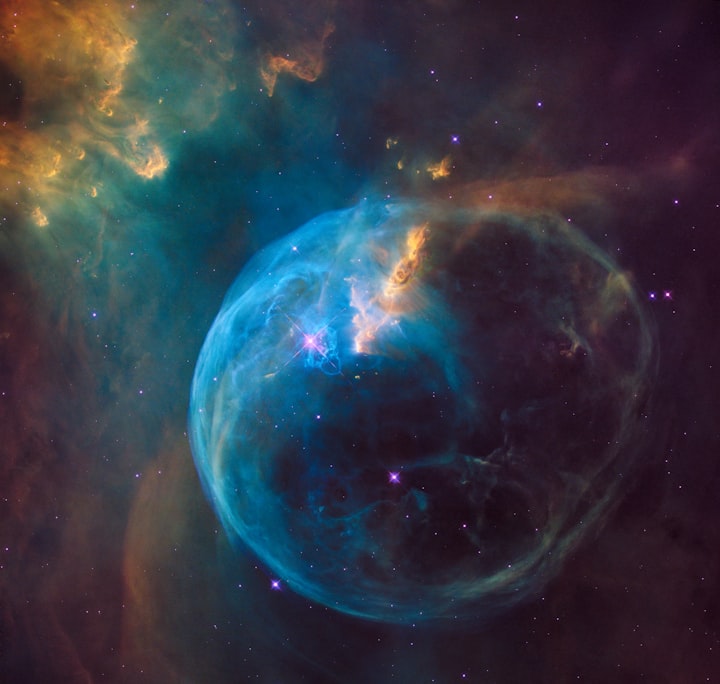Wormholes: Real or a Figment of Imagination?
Compelling Theories

The concept of wormholes, if encountered in reality, would manifest as spherical portals, reminiscent of black holes. Imagine a round, shimmering window offering a glimpse into a distant realm. Upon passing over this cosmic tunnel, the other side unfolds, revealing a new view, with your previous location fading into the background in the spherical window. The question arises: are wormholes genuine phenomena, or are they intricacies of magic concealed in the garments of physics and mathematics?
What is a Wormhole?
Throughout much of human history, space was perceived as a straightforward backdrop - a vast, unchanging stage where cosmic events unfolded. However, Einstein's theory of relativity reshaped this perspective. According to this theory, space and time are fused together on one "stage", and they are not consistent everywhere. Objects within this stage can influence it, causing it to stretch and warp. Instead of a rigid platform as previously believed, Einstein's stage resembles a flexible waterbed, allowing for the bending, and possibly tearing, of space. This flexibility opens the door to the possibility of wormholes!
In a simplified representation, our universe is likened to a flat sheet, tangled and twisted to form wormholes connecting vastly distant locations through a short bridge. This arrangement could potentially easily clear the way to nearly instantaneous travel across the universe, surpassing the speed of light. However, the question remains: where can we find these elusive cosmic gateways?
So is This Existential or all just..."Delulu"?

Presently, the existence of wormholes is confined to theories, existing solely on paper. General relativity, the mathematical framework supporting these theories, suggests their potential existence, but mathematical possibilities do not necessarily translate to physical reality. Various types of wormholes have been proposed, with one early concept being the Einstein-Rosen Bridges. This theory outlines every black hole as a gateway to an infinite parallel universe, offering a mind-bending perspective on cosmic connectivity.
As we delve into the realms of theoretical physics, the mystery of wormholes persists, beckoning further exploration into the nature of space, time, and the thought provoking potential of cosmic shortcuts.
The nature of empty space-time is inherently flat, but the presence of objects within it imparts curvature. As an object is compressed, space-time becomes more intensely curved around it. If this curvature intensifies to a certain point, space-time collapses, giving rise to a black hole. A one-way barrier, known as the 'event horizon', forms around the black hole, allowing entry but prohibiting escape. Anything that crosses this boundary is irrevocably drawn toward the singularity at the black hole's core, trapped in its gravitational grip.
However, an intriguing feasibility challenges the conventional understanding of a singularity at the heart of a black hole. There's a proposal that beyond the event horizon lies a region resembling our universe but mirrored and with time running backward, instead of a point of infinite density. In this parallel universe, where time exists and moves in the opposite nature as we know it to in our realm, often referred to as a white hole, matter is ejected in a manner reminiscent of a "big bang". This theory suggests an intriguing duality between black holes and white holes.
Yet, traveling across these Einstein-Rosen bridges, connecting black holes to white holes is a formidable challenge. Theoretical models suggest that these bridges take an infinite amount of time to travel across, pinching shut in the middle. Thus, entering a black hole wouldn't result in emerging from the corresponding white hole - instead, it would lead to an inescapable demise.
Traversable Wormholes
In order to swiftly explore the cosmos, an alternative is proposed: Traversable (unobstructed) Wormholes. If string theory, or its variants, accurately describe our universe, it opens the possibility of existing wormholes woven into the fabric of space-time. In the early moments after the "Big Bang", quantum alterations at minuscule scales might have given rise to numerous traversable wormholes. Cosmic strings - strings threaded through these tiny wormholes - were separated by extensive distances in the blink of an eye, scattering them throughout the universe. Whether formed by cosmic strings or other mechanisms, these potential wormholes could be dispersed across the cosmos, awaiting discovery. The thought provoking prospect exists that one of these cosmic shortcuts might be closer than our current awareness grasps, beckoning humanity to unravel the mysteries of the universe.
The resemblance between black holes and wormholes from an external perspective has led some physicists to propose that the super-massive black holes found at the centers of galaxies might actually be wormholes. While it is a formidable challenge to physically reach the center of the Milky Way to investigate this is further, there is an equally challenging concept - creating a wormhole ourselves...

Make it Happen
So, let's look at this more closely. For a wormhole to be useful, it must connect distant regions of space-time, have no event horizons blocking two-way travel, and be large enough to avoid gravitational forces that could harm human travelers. The key challenge lies in keeping the wormhole open, as gravity naturally tends to pinch it closed as soon as something attempts to pass through, potentially leaving only black holes at the ends.
In the case of successfully creating man-made wormholes, exotic matter becomes a necessary and crucial ingredient. Exotic matter possesses negative mass, which cannot be detected by gravitation, thus exerting a repulsive force - much like an anti-gravity substance - that will keep the wormhole open. In order for this to happen, the exotic matter must exert immense pressure to push space-time open, potentially using the vacuum of space itself as a candidate. Quantum variations in empty space continually create pairs of particles and anti-particles, presenting a way to manipulate the vacuum in order to stabilize the wormhole.
If we can maintain the stability of the wormhole, we could strategically position its ends to interesting locations. One possibility is establishing a wormhole hub in the solar system, connecting Earth to various destinations within our galaxy, consequently creating an interstellar human civilization within reach!
However, the concept of wormholes raises substantial concerns and challenges, such as potentially introducing time travel paradoxes and violating the causal structure of the universe. Many scientists argue that these challenges make the creation and existence of wormholes seemingly impossible. As of now, our understanding of wormholes remains theoretical, existing in our thoughts and equations, awaiting further exploration and understanding.
Read more articles like this on this page
About the Creator
Nomfundo Gumede
I enjoy writing; engaging through story-telling.
I have found my stress-reliever and ended up falling back in love with a part I had forgotten about myself - Expression.






Comments
There are no comments for this story
Be the first to respond and start the conversation.